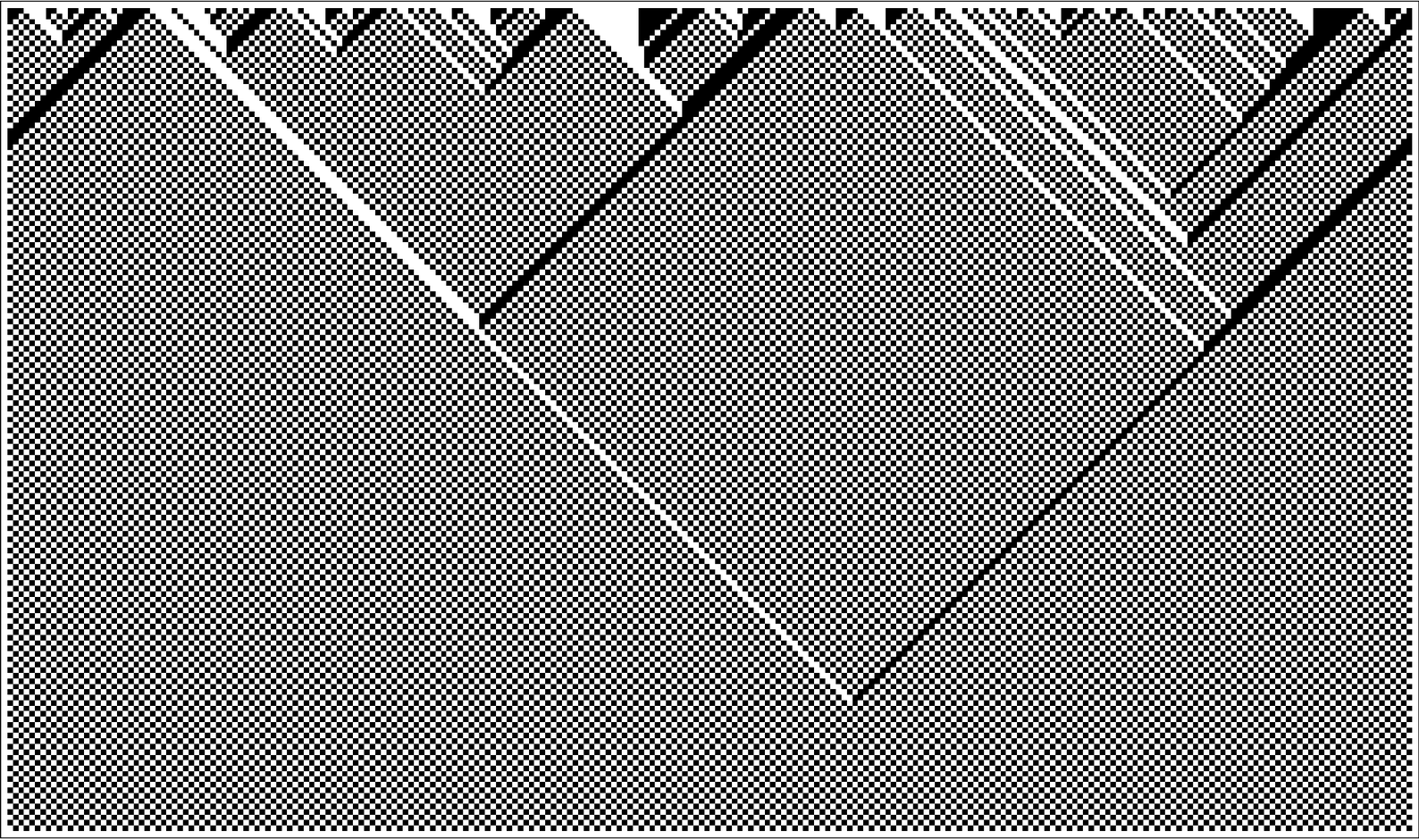The nested structure seen in this pattern can then be viewed as a consequence of the fact that rule 184 is able to emulate itself. And the picture below shows that rule 184—unlike any of the additive rules—still produces recognizably nested patterns even when the initial conditions that are used are random.
As we will see on page 338 the presence of such patterns is particularly clear when there are equal numbers of black and white cells in the initial conditions—but how these cells are arranged does not usually matter much at all. And in general it is possible to find quite a few cellular automata that yield nested patterns like rule 184 even from random initial conditions. The picture on the next page shows a particularly striking example in which explicit regions are formed that contain patterns with the same overall structure as rule 90.

Rule 184 evolving from a random initial condition. Nested structure similar to what we saw in the previous picture is still visible. The presence of such structure is most obvious when there are equal numbers of black and white cells in the initial conditions, but it does not rely on any regularity in the arrangement of these cells.



